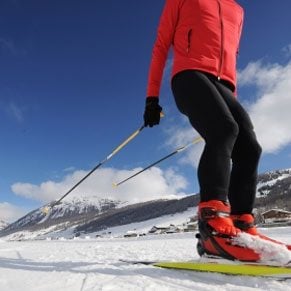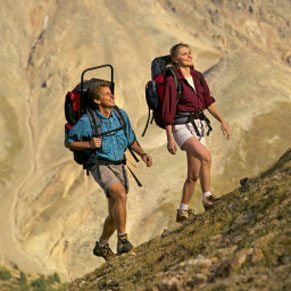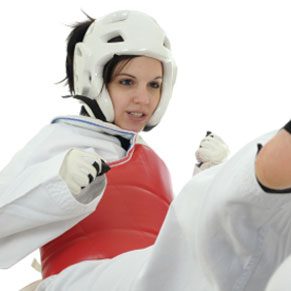
Cross-Country Skiing
There is no better exercise than cross-country skiing. This endurance sport (also called Nordic skiing) originated about 5,000 years ago, when people living in the area known today as Scandinavia strapped the bones of large animals to shoes with leather thongs.
Technically, it’s not much more complicated today than it was back then, although the equipment has become more sophisticated. Cross-country skiers now use runners made of fibreglass, wood, or plastic. It’s just a matter of gliding through fresh powder or wet mush. All in all, it’s about scooting over icy patches and through slush.
Cross-country skiing is one of the few activities that requires you to use all of the major muscle groups in both the upper and lower body at the same time. This results in a sizable aerobic benefit as well as a great caloric expenditure.
Also, unlike downhill skiing, it places little stress on the joints, so it’s suitable for people of all ages and most fitness levels.
Finally, the gliding motion stretches your muscles, especially those in your calves, hamstrings, and lower back. As if all that weren’t enough, cross-country skiing immerses you in the beauty of wintertime nature and lets you enjoy it at a relaxed pace afforded by few other sports.
Why It’s Good for You:
• It’s a comprehensive, total-body workout. Yet because it’s low impact, the injury rate is lower than that of similar sports.
• It can strengthen your cardiovascular system. Plus, it promotes weight loss and reduces stress, freeing the immune system to fight illness.
• It burns 550 calories per hour. That’s if you weigh 150 pounds. If you’re heavier, you’ll burn even more.

Hiking
We all know that walking is terrific exercise, but the equally simple option of hiking offers all the same benefits, squared.
When you take your walks off-road, you get to enjoy the beauty of the great outdoors while giving your lower body a great low-impact and physiologically diverse workout. Because of the irregular surfaces of most hiking trails, you generally get the equivalent of a good, long workout on a stair machine or a treadmill. A good hike challenges both the serious athlete and the for whose enthusiasm for fitness person who’s just seeking better health. You don’t person who’s just seeking better health. You don’t need any sophisticated gear, but if you use a walking stick (as most experts recommend), you’ll exercise your upper body as well as your legs, while reducing the risk of injury from missteps.
Comfortable, sturdy, broken-in shoes are a must – if not hiking boots, then good cross-training sneakers. The right shoes will protect you from blisters and falls. Wear layers of loose-fitting clothes, preferably of materials such as nylon or polypropylene that will wick moisture away from your body. And always bring extra water and snacks along.

Martial Arts
If aerobics classes fail to provide the kick you’re looking for, a better option may be the latest trend in fitness classes: martial-arts-inspired workouts like Tae-Bo and kickboxing. After all, nothing delivers cardiovascular conditioning like an hour of energy-packed flying kicks.
If you’re the more traditional type, look to the ancient martial arts, such as judo, aikido, jujitsu, karate, or kung fu. All provide an aerobic workout that engages the whole body and emphasizes balance and coordination.
Although these techniques have been around for centuries, there has been relatively little scientific research on martial arts. The one martial art that has been studied with any thoroughness is Tai chi chuan, or tai chi, a conditioning exercise of graceful, controlled movements that can be done even by people unable to perform more vigorous activities because of age, illness, or disabilities. In one study that demonstrated tai chi’s benefits, men and women aged 58 to 70 did an hour of the exercises four or five times a week. Over time, the men’s cardiovascular fitness increased by 16 percent and the women’s by 21 percent. Thanks to tai chi, they could climb stairs and walk briskly without getting breathless.